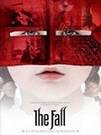|
|
||||
|
|
by Joanne Ross  With so many dreadful films flooding movie theaters month after month, it's a genuine pleasure to see one as masterfully realized as The Fall, directed by Tarsem Singh. Because of its depth, sensitivity, imagination and visual grandeur, this film reminds me why I love movies so much. It's what moviemaking is all about. The Fall is the second film for Singh. His first was 2001ís The Cell, a movie that introduced us to his visual aesthetic. Singh brings that same sensibility to The Fall. But the subject matter and genre of both films couldnít be more different. A fantasy/drama, with two well delineated, very distinct lead characters, The Fall is, thematically speaking, a story about human frailty, transcending personal tragedy, and salvation. It is also a loving homage to old An opening expository title sequence filmed in black and white (is someone dreaming perhaps?) sets up the filmís premise. Stuntman/actor Roy Walker (Lee Pace) is injured in a fall while performing a daring stunt during a silent movie shoot. Now a paraplegic and bedridden, he's recuperating at a hospital in Friendly, inquisitive, and restless, Now, what the staff and Singh masterfully orchestrates all of the elements into his own unique vision. Cast and crew filmed in locations throughout the globe, so we get to see shots of some of the greatest wonders of the world, including the Pyramids, the Great Wall, and the Rice Terraces. One standout: Singh and his designers film an extraordinary sequence reinterpreting M. C. Escherís famous gravity and logic-defying stair lithographs as a location in which the story characters move about. The story characters pursue Governor Odious against a fantasy landscape painted in vivid, dazzling colors reminiscent of the old Technicolor three-strip process. This is high-priced, high-end eye candy for sure. And itís so much more. Broken in body and spirit, The acting here is top notch. Pace comes across as a handsome, likeable, everyman type capable of evoking the emotions and mental pain of a man whose life has changed irrevocably and who longs to escape the prison of his body. High marks also go to the sensitive and natural Untaru, who reminds me of Victoire Thivisol in the 1996 film, Ponette. In one crucial scene after Alexandria tries to help Roy for a second time, their interaction made me feel I was eavesdropping on a private conversation between a father and daughter who love one another deeply instead of two actors engaged in a scripted dialogue. Thanks to the surefooted Singh and his actors, The Fall delivers the goods on both the dramatic and visual fronts. I canít urge you strongly enough to see this movie. Donít miss the opportunity to experience something truly unique. (Released by Roadside Attractions; not rated by MPAA.) Review also posted at www.MovieBuffs.com. |
||
|
© 2026 - ReelTalk Movie Reviews Website designed by Dot Pitch Studios, LLC |



